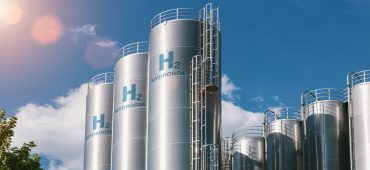
- Green Tech
Global Hydrogen Storage Market Hits $16B With Steady Growth
5 minute read

Growing hydrogen storage market attracts major investments as China and Europe accelerate clean energy development initiatives
Three Key Facts
- Global hydrogen energy storage market reaches $15.98 billion in 2023, projected to grow to $25.05 billion by 2033 at 4.6% CAGR
- Clean Hydrogen Partnership awards €154.6 million in grants to 26 breakthrough projects accelerating hydrogen technologies across Europe
- China advances hydrogen capacity significantly between 2019-2024 through technological innovation and economic expansion, positioning for global leadership
Introduction
The global hydrogen economy reaches a critical inflection point as technological breakthroughs and massive investments accelerate market growth across production, storage, and utilization sectors. China emerges as a dominant force in hydrogen development, while Europe commits substantial funding to maintain competitive positioning in the rapidly expanding market.
The hydrogen energy storage sector demonstrates robust expansion, with compression storage technology commanding over 40% of industry revenue in 2023. Solid storage systems capture approximately 51% of revenue share, offering viable solutions for stationary power applications and fuel cell vehicles.
Key Developments
China implements comprehensive hydrogen strategy improvements spanning 2019 to 2024, focusing on advanced production methods and storage innovations. Research using Poisson Pseudo Maximum Likelihood estimation reveals that technological innovation significantly reduces Green Hydrogen Generation Capacity emissions, while hydrogen pricing fluctuations show minimal direct impact on environmental outcomes.
The University of Alberta launches the Centre for Hydrogen Innovation, Workforce Development and Outreach, uniting over 60 researchers under director Amit Kumar, a Canada Research Chair. The center functions as a strategic think tank connecting government entities with industry expertise across the hydrogen value chain.
European initiatives gain momentum through the Clean Hydrogen Partnership’s 2024 funding cycle, supporting projects including SWEETHY, SYRIUS, DELYCIOUS, and REMEDHYS. These initiatives address critical challenges in hydrogen production efficiency, storage capacity, and industrial applications.
Market Impact
Electrolyzer technology costs face projected reductions of 50% by 2030, positioning green hydrogen as financially competitive with conventional grey hydrogen alternatives. Industry analysts anticipate green hydrogen demand reaching 500 million metric tonnes annually by 2050.
According to ScienceDirect, China’s domestic income development creates supply chain challenges despite increasing hydrogen exports driven by importing nations’ economic growth. This dynamic influences global pricing structures and trade relationships.
Hydrogen integration in transportation sectors shows accelerating adoption, with fuel cell vehicles offering extended range capabilities and reduced refueling times compared to battery electric alternatives. Metal treatment, petroleum refining, and food processing industries drive increased deployment of hydrogen energy storage systems.
Strategic Insights
Companies pursue dual strategies targeting both green and blue hydrogen production to address diverse market demands and regulatory requirements. The United States leverages policy support and large-scale investments to establish blue hydrogen production leadership, while regions with abundant renewable resources advance giga-scale green hydrogen projects.
Geographic arbitrage becomes central to business models, with firms utilizing low-cost renewable energy areas for hydrogen production and export to high-demand regions. Strategic partnerships, including offtake agreements and collaborations with industrial users and utilities, provide essential investment risk mitigation.
Power-to-gas technology commercialization presents opportunities for grid integration, converting hydrogen back to electricity during peak demand periods and blending with natural gas pipelines to reduce carbon intensity across existing infrastructure.
Expert Opinions and Data
University of Alberta president Bill Flanagan emphasizes sector collaboration, stating “I know that all of us in the room today share a vision to develop a sustainable energy future that will see the world achieve net-zero” during the Canadian Hydrogen Convention announcement.
Industry experts identify mid-2020s as the critical period for significant hydrogen sector progress, though scaling challenges persist regarding secure supply agreements and renewable resource access. The competitive dynamics between green and blue hydrogen continue evolving based on regional resource availability and policy frameworks.
Research findings indicate that stable regulatory frameworks prove more effective than market-driven price changes for emissions reduction. China’s integration of hydrogen into the Energy Trilemma Index framework supports long-term energy security and decarbonization objectives through systematic policy coordination.
Conclusion
The hydrogen economy demonstrates unprecedented momentum through technological innovation, substantial financial commitments, and coordinated policy initiatives across major global markets. China’s comprehensive strategy development, Europe’s targeted funding programs, and North America’s research infrastructure investments position the sector for transformative growth.
Current market dynamics reveal hydrogen’s expanding role in renewable energy integration, industrial applications, and transportation sectors, with storage technologies proving essential for grid stability and demand management. The convergence of cost reductions, technological advances, and supportive regulatory frameworks establishes hydrogen as a cornerstone of global decarbonization efforts.








